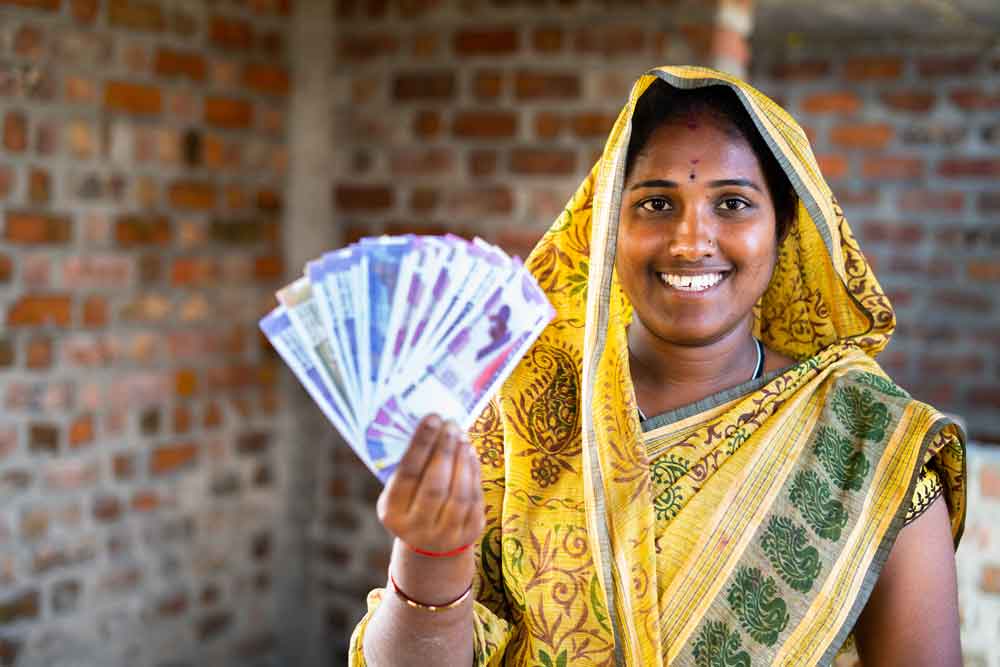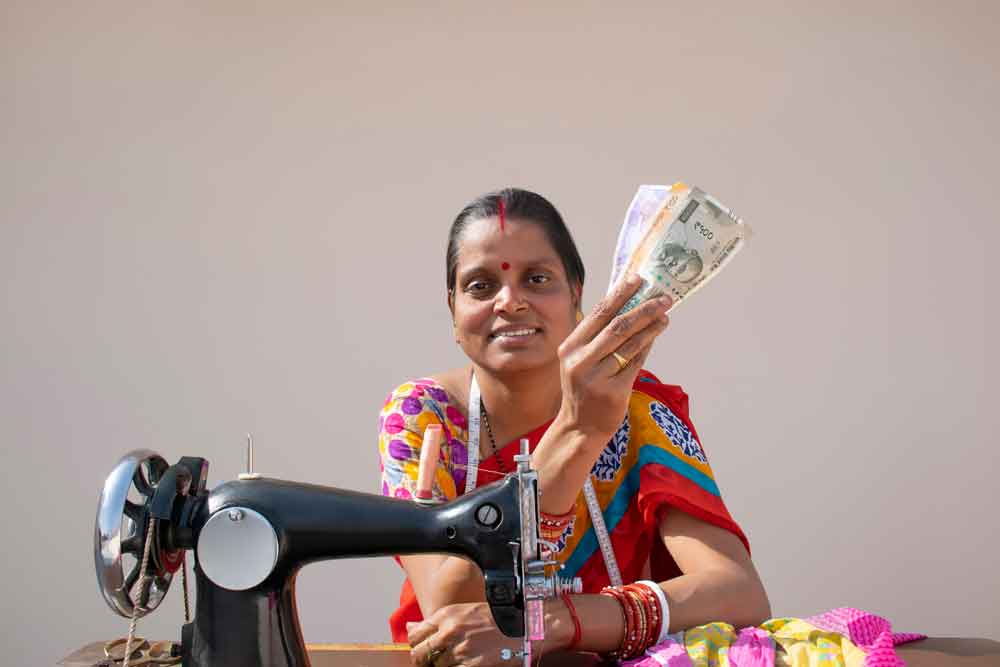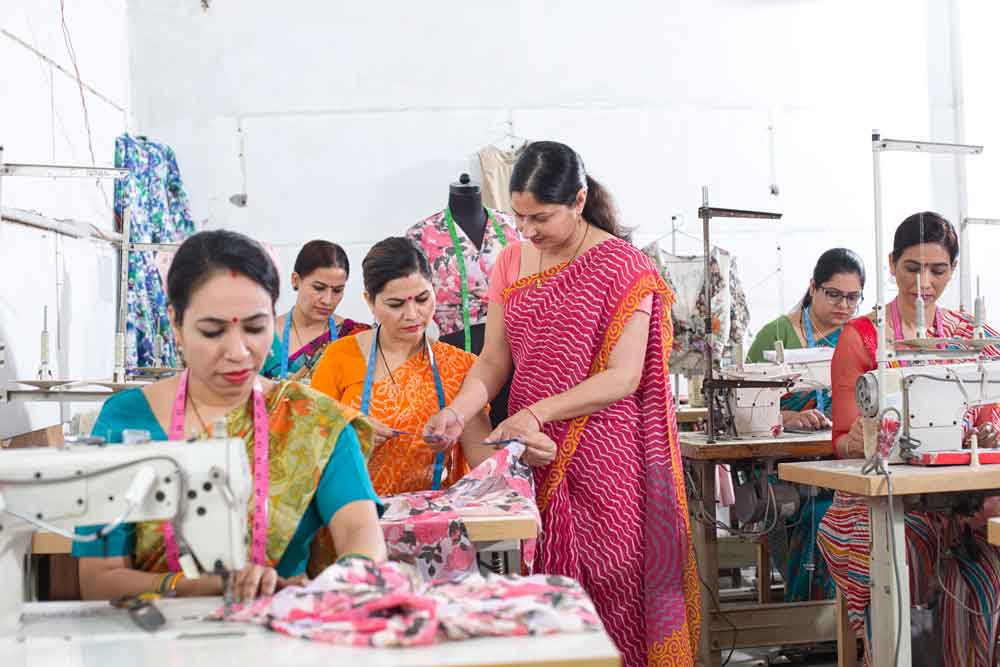Indian women are steadily reshaping the nation’s economy, and a new report from NITI Aayog – ’From Borrowers to Builders – Women’s Role in India’s Financial Growth Story‘ – captures this transformation through hard data and fresh insights.
In 2024 alone, women opened nearly 37 lakh new business loan accounts, took 4.3 crore loans to meet personal finance needs, and availed 4 crore gold loans. These numbers reflect a quiet revolution in how women are accessing and using credit across sectors and regions.

Women are driving change across sectors
Whether it’s leading rural Self-Help Groups (SHGs) or launching tech start-ups in cities, women are increasingly stepping into roles as entrepreneurs, innovators, and decision-makers. Their contributions are felt across agriculture, retail, technology, and beyond.
Yet, their economic potential remains largely untapped. Women make up nearly half of India’s population but contribute only 18 per cent to the GDP.
The NITI Aayog report, created in collaboration with TransUnion CIBIL, the Women Entrepreneurship Platform (WEP), and MicroSave Consulting (MSC), explores how women are evolving from being merely borrowers to builders of the economy. It tracks key trends in credit behaviour, financial self-awareness, and entrepreneurship – and underlines how increased financial participation can unlock transformative growth.
It also highlights persistent barriers – from lack of collateral and limited access to formal credit, to deeply entrenched social norms.
A steady rise in women’s workforce participation
India’s Female Labour Force Participation Rate has gone from 23.3 per cent in 2017-18 to 41.7 per cent in 2023-24, thanks in large part to increased rural participation.
The National Rural Livelihood Mission has played a crucial role here, empowering 90 lakh women via SHGs and giving them access to formal banking systems.
More women stepping into entrepreneurship
Today, over 40 per cent of MSMEs registered under UDYAM are women-owned (as of Jan 2025). Women entrepreneurs received loans worth ₹2.22 lakh crore under the Pradhan Mantri Mudra Yojana in 2023-24.
Street vendors have also benefited. Under the PM SVANidhi scheme, 30.6 lakh women availed working capital loans worth ₹5,939.7 crore by the end of 2024.

Credit usage patterns are shifting
Women’s credit behaviour is becoming more diverse. In 2024:
- Around 37 lakh women opened new loan accounts for business purposes (business loans, vehicle loans, loans against property), amounting to ₹1.9 lakh crore.
- However, business-related loans still make up just 3 per cent of all loans taken by women.
- Personal finance needs dominate: 4.3 crore loans worth ₹4.8 lakh crore were disbursed for home, vehicle, or personal loans.
- Gold loans are also on the rise: women took 4 crore gold loans totalling ₹4.7 lakh crore, five times higher than in 2019.
Younger women (under 30) tend to take out more personal loans but are underrepresented in business or agriculture credit, likely due to lack of credit history or collateral, and cultural constraints.
Women in rural and semi-urban areas, meanwhile, lean more towards business, agricultural, or gold loans, rather than personal or home loans.
State-wise differences in credit inclusion
Financial inclusion among women varies sharply across states. Southern states show stronger engagement:
- Tamil Nadu leads, with 44 per cent of women having at least one active loan.
- It is followed by Andhra Pradesh (41 per cent), Telangana (35 per cent), and Karnataka (34 per cent).
- The national average stands at 31 Per cent.
States like Rajasthan, Uttar Pradesh, and Madhya Pradesh have seen rapid growth in women borrowers, but their overall share remains relatively low.

Women are taking charge of their financial health
More women are actively monitoring their credit scores and reports – a sign of rising financial confidence. In 2024:
- Nearly 2.7 crore women tracked their credit health, up from 1.9 crore in 2023.
- That’s a 42 per cent jump in just one year, compared to only 1 lakh women doing so in 2018.
- Gen Z women led the way with a 56 per cent rise in self-monitoring, while millennial women saw a 38 per cent increase.
Metro areas recorded a 30 per cent growth, while non-metro areas surged by 48 per cent.
Top states for self-monitoring women: Maharashtra, Tamil Nadu, Karnataka, Uttar Pradesh, and Telangana, account for nearly half of all self-monitoring women across India.
In 2024, women made up 19.43 per cent of the entire credit self-monitoring base – up from 17.9 per cent the year before.
And the benefits? Real and measurable.
- 13.5 per cent of women opened a new loan within a month of checking their credit.
- 44 per cent improved their credit scores within six months.
The path forward is promising, but not without challenges
While more women are entering the formal credit system – many as first-time borrowers – access to business credit remains tough.
Reasons include:
- Limited documentation and credit history
- Lack of guarantors or collateral
- Gender biases within lending systems
- Most financial products are not designed with women in mind
Today, just 7 per cent of MSME credit reaches women, and a massive 79 per cent of women-owned businesses still rely on self-financing. Most women-led MSMEs depend on non-collateral loans capped at ₹1.5 lakhs.

What needs to change?
Organisations like MSC and WEP recommend building ’credit-readiness‘ through:
- Encouraging digital payments
- Promoting bookkeeping and business registration
- Offering digital literacy training at the grassroots
Initiatives like WEP’s Financing Women Collaborative (FWC) aim to bridge gaps with mentorship and direct access to lenders.
Finally, having more women at the table – designing financial products and influencing decisions – will help ensure that solutions actually reflect women's realities.